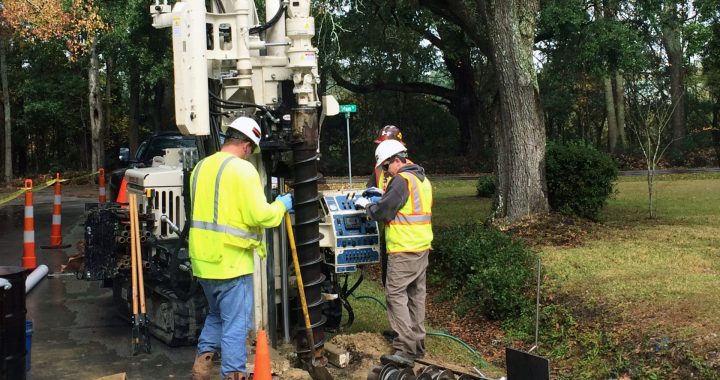-
If you suspect a property has contamination, a Phase II ESA is one of your best options for identifying potential liability and future cleanup costs prior to purchase.
What is a Phase II ESA?
A Phase II Environmental Site Assessment (ESA) is typically the second step in the environmental due diligence process and usually succeeds a Phase I ESA. Phase II ESAs include soil, soil vapor, and/or groundwater sampling, which will help determine if there is a presence or absence of hazardous substances and petroleum products in site media.
Why perform a Phase II ESA?
A Phase II ESA addresses recognized environmental conditions (RECs) identified in a Phase I ESA to determine if contamination is present, which helps a purchaser determine potential liability. Findings of the Phase II can also be used in negotiating the property value. Additionally, the Phase II ESA gives the purchaser the peace of mind that they know what they are buying.
When are Phase II ESAs performed?
Phase II ESAs are typically conducted prior to purchase or transfer of a property but may also be conducted for an existing owner. That way, if environmental contamination is identified, the purchaser can make an informed decision regarding their willingness to manage identified risks associated with the property.
What field work is typical for a Phase II ESA?
There is no “typical” Phase II ESA because no two sites are exactly the same. Phase II ESA scopes of work are customized based on various factors, including historical operations at the property, types of known or suspected releases, potential risks, and the client’s risk tolerance. Common contaminants for commercial and industrial sites include volatile organic compounds, semi-volatile organic compounds, and metals. Many other types of contaminants may exist depending on the specific property and should be addressed in the Phase II ESA.
Here are some common aspects you can expect to be customized for a Phase II ESA:
- Media sampling will include indoor air, soil, soil vapor, and/or groundwater.
- Sampling method and laboratory analyses will be based on the type of media sampled.
- Number and location of samples collected will depend on the size of the property, the area(s) of known or suspected contamination, geology of the property, and other property characteristics.
- Sampling equipment requirements will be affected by the geology of the property and project (future use) objectives. For example, the type of drill rig used for collecting soil and groundwater samples is dependent on the type of underlying soil and/or rock. Alternatively, a drill rig may not be needed if only surface or shallow soil samples are being collected.
- Indoor air and/or sub-slab vapor sampling will be performed if greater insight into vapor intrusion and indoor air quality is needed. This has become more common with a recent focus on indoor air quality.
- Additional assessments will be included when necessary. For example, a geophysical survey may be conducted to determine if underground tanks or other buried features are present. Some purchasers may also request surveys for asbestos containing materials, lead-based paint, or a wetlands assessment.
What’s included in a Phase II ESA report?
A Phase II ESA report summarizes the scope of work and findings, which, based on project objectives, can include:
- Field observations, screening results, and any other pertinent field information
- Depth to groundwater
- Laboratory analytical results
- Comparisons to applicable state or federal screening or action levels
- Discussion of contaminant concentrations (if applicable)
- Suggestion for additional investigation to further delineate or characterize impacts if concentrations of certain compounds exceed the applicable screening or action levels
The results are in. Now what?
There may be additional costs associated with purchasing or redeveloping a contaminated property, but many opportunities exist for managing risk. If warranted, remediation may be recommended to prevent threats to human health and the environmental. Alternatively, based on the current and planned uses of the property, additional actions may not be warranted or recommended. Other alternatives can also be considered such as entering the property into a Voluntary Cleanup or Brownfields program that grant property purchasers liability protection.
Are you wondering if a Phase II ESA should be part of your next real estate transaction?

Phase II Environmental Site Assessment: What to Expect
Posted in Insights/Innovation.